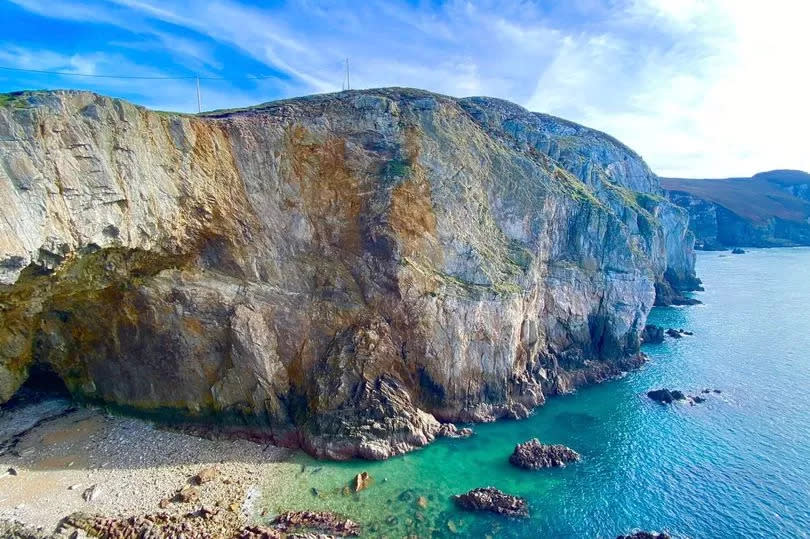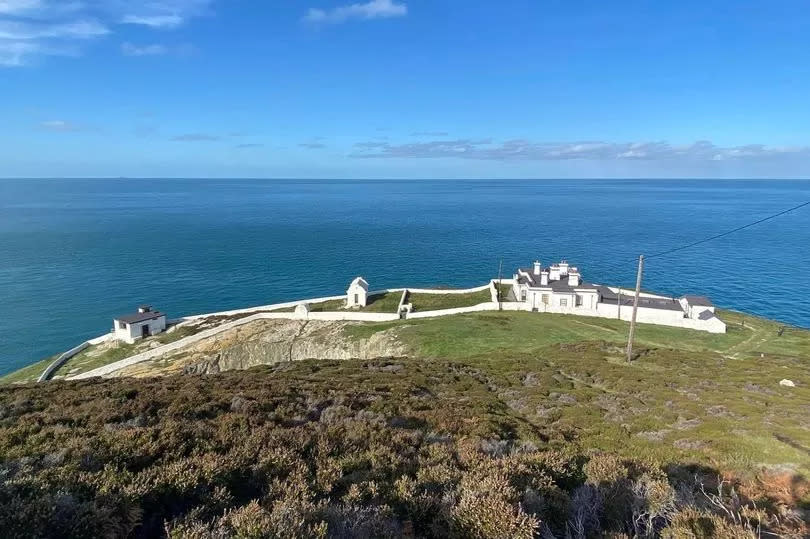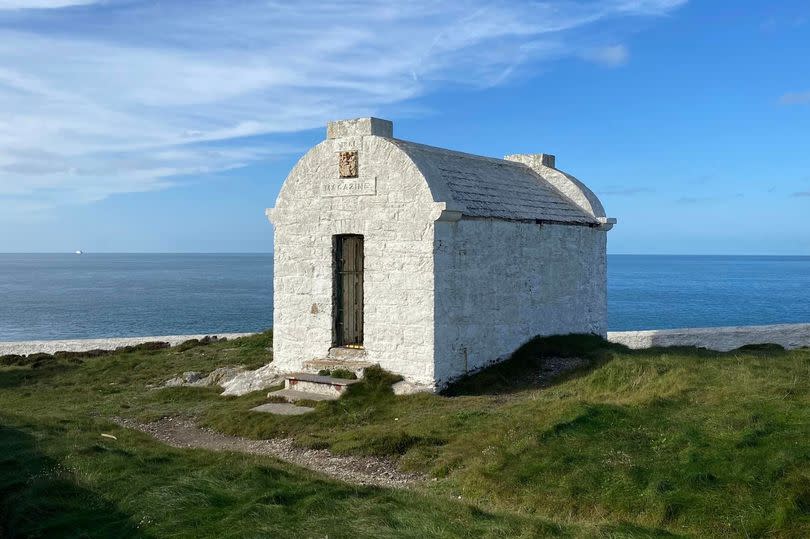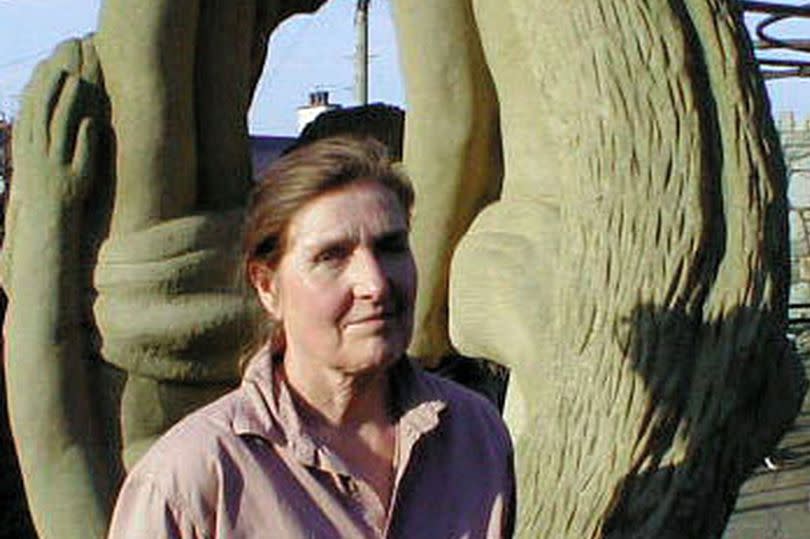The wild and overlooked Welsh beauty spot that looks like it belongs in the Mediterranean

In the winter, the sea's wrath is palpable as it lashes out at the cliffs, with wind-driven stones sometimes shattering windows in buildings perched 400ft above on the headland. But come summer, the winds subside and the air is filled with the calls of seabirds, breathing life into this remote and rugged place that feels like the very brink of the world.
Perched atop the high cliffs of North Stack (Ynys Arw) on Holy Island in Anglesey, visitors can enjoy sweeping views across Gogarth Bay to a seemingly infinite horizon on clear days, even the Wicklow Mountains in Ireland and the Isle of Man are visible. This spot exudes a sense of timelessness, where stunning beauty is ever-present, yet danger is never far away, highlighting the delicate balance between human presence and the wildness of nature.
Legend has it that not too long ago, a woman's song would drift down from these clifftops to the seals below, while donkeys once trudged up from Holyhead with supplies for the Trinity House keepers who braved the unpredictable elements.
READ MORE: 21 landmarks that just wouldn't make sense anywhere else but Wales
A testament to the past stands firmly on the headland: an old fog warning station, constructed to alert passing vessels of the perilous North Stack, an islet beneath the headland known in Welsh as Ynys Arw, or "rugged island". In the 18th century, this station would launch cannonballs into the foggy abyss as a warning signal, a method fraught with its own inherent risks.
Below the fog station lies a gigantic 250ft-high cavern, whose clamorous bird population earned it the nickname of Parliament House due to the "disagreeable gabbling noises" they emit. Renowned climber Pete Crew even made the humorous observation that the "cormorants represent the bishops, the peregrine falcons the lords, the razorbills the Commons and the gulls the people", reports North Wales Live.

Somewhat resembling a quarried hole in the cliff, thanks to its rectangular shape, this cave forms part of an expanse of rock regarded by many as the best climbing spot on offer in the UK. Tragically, this area has claimed lives with climbers taking on a variety of 28 challenging routes boasting names like Wen Zawn, Dream of White Horses, and the formidable T-Rex.
A stark reminder of these dangers occurred just last weekend when a fallen climber was rescued from the cliffs following an eight-hour operation. The alert had been raised by a companion who'd scrambled back up the daunting 400-ft cliffs to catch a mobile signal.
This stretch of coast is regularly described as nothing short of breathtaking by those who venture here; nonetheless, it sees far fewer visitors than its more illustrious counterpart, South Stack (Ynys Lawd). Situated just over a mile away, South Stack draws steady crowds particularly on fair-weather days, attracted by its picturesque lighthouse and popular RSPB reserve.

North Stack may not boast the same level of accessibility or charming buildings as its counterparts, but it compensates with an abundance of drama and a wild atmosphere. The cacophony of seabirds such as razorbills, cormorants, and gulls provides a natural soundtrack to this rugged Welsh gem.
Social media seems to have overlooked North Stack, with few reviews available online. However, those who have discovered it speak highly of its offerings. "Fabulous scenery," one summer visitor said. "Beautiful walks and wildlife." Another added their praise: "Great spot to just sit listen and observe. Love it there." Dwell time is rewarded at North Stack, where a rock has been whimsically painted to resemble a chair, inviting visitors to sit and soak in the surroundings.
This spot has likely remained unchanged since Neolithic times when roundhouses were built on nearby Holyhead Mountain, succeeded by an Iron Age hillfort and a Roman watchtower from the third century. Today, Carneddau ponies roam freely, contributing to the restoration of the heathland within Anglesey's designated Area of Outstanding Natural Beauty.
The island's coastal path includes North Stack, linking it to Holyhead's Breakwater Park and offering splendid views of the harbour. Alternatively, adventurers can take the trail up the coast from South Stack. Historically, North Stack's primary role was an unfortunate one causing shipwrecks. Efforts to mitigate this began around 1780 with the establishment of a fog station, where a bell served as the initial warning system, its success fluctuating with the wind.
In 1857, Trinity House took over the facility and installed two long-barrel cannons that fired every four minutes. By 1861, the shells were stored in a stone-built magazine with a distinctive curved roof, which remains the site's signature building.
During the latter half of the 19th century, electric tannoy emitters replaced the fog cannons. The new fog signal stack contained 35 tannoys and could be heard up to six nautical miles away. However, these signals were ineffective for aircraft. On December 22, 1944, an American B24 J Bomber crashed into the sea nearby while flying in dense fog en route to refuel at RAF Valley.
The pilot ordered his eight crew to bail out, but they were never seen again. Only the pilot and his co-pilot survived. Local divers later recovered a propeller blade, which was used as a memorial in Breakwater Country Park, Holyhead. The ill-fated B24 still lies 10-20 metres underwater near North Stack.
The fog station's siren was silenced in 1986 when a new array was installed at South Stack lighthouse. Its two cannons, long redundant, were hauled over the cliff in the 1960s. One was rescued by divers in 1984 and is now also on display at Breakwater Country Park. For the latest Welsh news delivered to your inbox sign up to our newsletter.
The site's two buildings have seen various uses, with one being transformed into an artist studio. The driving force behind this for 22 years was the tireless Philippa Jacobs, who was drawn to the location by personal tragedy and the allure of its grandeur and ever-changing light.
Living in such a unique setting came with its own set of challenges: there was no mains water, postal service or refuse collection, as North Stack is only accessible via a steep, rocky track over Holyhead Mountain. For washing and bathing, Jacobs relied on water pumped from the building's flat roof.

As years went on, these challenges became more burdensome: repairing windows damaged by the sea and navigating the rough 1.3-mile cliff-edge track, along which she transported her exhibition paintings in a Land Rover. Speaking to North Wales Live, she said: "I have had 22 very happy years here and have loved every moment of it. It has been an enormous privilege to have lived at North Stack so long the longest I have lived in one place."
"Everyone loves the position, which is unique, and the history of the house, but the track has put people off even though I have negotiated it successfully for 22 years and have made many improvements." In 2011, she sold the property and now resides and continues to paint in Llandderfel near Y Bala.
Sea kayaks are arguably the best way to explore North Stack and its captivating network of water-filled tunnels. Another highlight is a resident colony of grey seals, often seen lounging in Parliament House Cave. However, there's a strict ban on visiting the cave during the autumn breeding season to ensure the seals are not disturbed. Life here continues as it has for thousands of years. It's a rugged yet stunning location that primarily offers visitors breathtaking views.

 Yahoo News
Yahoo News 
